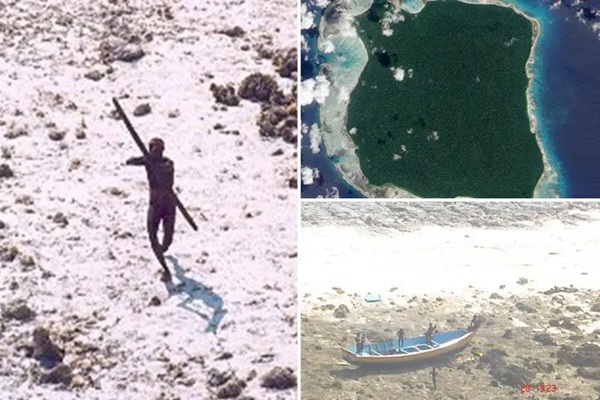Today, we are going to unravel the whole truth about Yoro, Honduras, the village where ‘everyone dies young.’ We will dissect the rumors, learn the truth and tell their story. In Honduras one name sometimes appears in that shorthand: Yoro. The town and the surrounding department carry a dozen stories — some true, some folkloric, some simply misunderstood by outsiders. Most famous among them is the harmless, strange and well-documented event called la lluvia de peces — the rain of fish. Less proven are claims that “everyone dies young” there.
This article separates myth from fact. It explains what Yoro is, why it became associated with dramatic stories, what life and health statistics actually look like in the region, the science and folklore behind the rain of fish, and the social and economic factors that shape life expectancy in Honduras.
Where and what is Yoro?
Yoro is both a town and the capital of Yoro Department in northern Honduras. The municipality of Yoro contains urban centres and a large rural area; the department is a mix of farmland, small towns, and mountainous terrain. As a municipal seat, Yoro serves as a commercial and administrative hub for the surrounding agricultural communities. It is not a single isolated “village,” and it certainly is not a place where credible demographic evidence shows everyone dying young.
Population data show Yoro municipality as a mid-sized municipal area with tens of thousands of residents (municipal population estimates are in the tens of thousands while the department is larger). Like many parts of Honduras, the economy relies heavily on agriculture, small trade, and remittances from family members working abroad. The community is proud of its traditions and festivals — including the Festival de la Lluvia de Peces, which celebrates the town’s famed fish rains.
How the “everyone dies young” story probably began — rumor, shorthand and context
Headlines sometimes shorten complex public-health problems into single, clickable phrases. A few factors likely help explain the “everyone dies young” label when it surfaces about Yoro or surrounding areas:
- Rural health disparities. Parts of Honduras struggle with limited access to health care, malnutrition and infectious diseases. Rural municipalities can show lower life expectancy than wealthy urban areas. That gap sometimes translates into local suffering that outsiders simplify into “people die young.” (We’ll provide the actual health data later.)
- Local tragedies and anecdote. Specific families or communities may have experienced clusters of deaths tied to pollution, accidents, or outbreaks. Those sad stories can be amplified and generalized.
- Media distortion. Foreign and social media often favor short, shocking narratives. A detailed, nuanced public-health reality rarely gets the same attention as a dramatic claim.
- Myth + reality mixing. Yoro’s fish-rain folklore and other local legends invite sensational treatment from travel writers and listicles. A place associated with a “miracle” can also attract lurid rumors.
Putting those elements together yields the misleading claim. But measured data and on-the-ground reporting do not support the idea that “everyone” in Yoro dies young.
What the statistics say: Honduras and life expectancy
To evaluate claims about premature mortality in a locality, we must start with evidence.
At the national level, Honduras’s life expectancy is lower than in wealthier countries but not consistent with a place where everyone dies young. International sources put Honduras’s life expectancy roughly in the high-60s to mid-70s depending on the dataset and year. Life expectancy has fluctuated with public-health trends, violence and economic changes, but the national figures indicate people routinely live into older adulthood.
Local variations matter. Rural, remote and impoverished municipalities can have higher infant mortality and shorter average lifespans than the national mean. Yet the evidence available for Yoro does not show an extreme mortality pattern that would justify claiming universal early death. Census and municipal population figures show a normal population structure, with children, working-age adults and older adults represented.
Why communities can seem to “die young” — the real risk factors
If a visitor hears the phrase “people die young” about any community, there are real and addressable reasons why such perceptions form. Understanding these helps avoid sensationalism and points toward solutions.
Poverty and nutrition
Chronic under-nutrition in childhood reduces adult height and increases lifelong disease risk. Malnutrition also makes children more vulnerable to infections that can cause early death. In poor rural Honduran municipalities, poverty remains a major determinant of health.
Worldometer
Limited primary care and emergency response
Rural clinics are often under-resourced and understaffed. Delays in treating common infections, obstetric emergencies, or heart attacks can raise mortality rates that cluster in certain age groups. Stronger primary care changes outcomes swiftly.
Infectious disease burden
Vector-borne illnesses (dengue, chikungunya, Zika at times), water-borne disease and respiratory infections contribute disproportionately in resource-limited settings. Outbreaks can create the impression of sudden increases in mortality though they are preventable with the right infrastructure.
Violence and accidents
Honduras has experienced high rates of violent crime in recent decades; in some regions homicide rates have directly reduced life expectancy, especially among young adult men. Road accidents and occupational hazards in agriculture and informal work also cause premature deaths.
Local pollution — pesticide misuse, contaminated water or mining runoff — can create community clusters of illness. Sometimes the cluster is real and traceable; sometimes it is misattributed.
All of these factors, alone or combined, can make parts of a department seem unhealthy. But the right antidote is public-health investment, clean water, maternal care, vaccination and violence prevention — not myth making.
The thing that really draws outsiders: la lluvia de peces — fish in the streets
Yoro is best known around the world for a different phenomenon: la lluvia de peces — the rain of fish. For well over a century, local residents report that after intense storms in the rainy season (typically May–July), hundreds of small freshwater fish appear in streets and puddles across the city and nearby rural areas. The event has become a cultural touchstone: a parish festival, a local miracle story linked to an influential 19th-century priest, and a tourism draw.
Explanations scientists consider
Scientists have proposed several non-miraculous mechanisms:
Waterspouts or tornadoes picking up fish. Waterspouts can lift small aquatic animals and later drop them inland; this explanation is often invoked for “animal rain” events worldwide. Critics note waterspouts transporting fish 72 km inland every year seems unlikely for Yoro.
Subterranean or seasonal hydrology. Fish may live in subterranean streams or in seasonal river systems and be flushed into streets by heavy rains. Some researchers find this plausible because the species found are freshwater species and because fish are often observed near local tributaries after storms.
Local ecology and behaviour. The specific species and local ecological patterns may help explain repeated events in the same region without invoking extraordinary forces.
Whatever the mechanism, la lluvia de peces is a documented cultural phenomenon. It is not evidence of a community dying young — it’s a folk natural event that has shaped local identity and an annual festival.
On-the-ground life in Yoro: economy, culture and health services
A responsible portrait of any place requires attention to everyday life.
Economy and livelihoods
Yoro’s economy combines small-scale agriculture (staple crops, cattle), small commerce and public-sector employment. Like other Honduran municipalities, remittances from relatives abroad are important for household income. Economic insecurity shapes migration decisions and access to services.
School attendance in rural Honduras has improved but lags behind wealthier nations. Educational attainment affects employment and health-seeking behaviour.
Municipal clinics and regional hospitals provide primary and emergency care, but quality and coverage vary. Neonatal care, maternal services, vaccination programs and mosquito control improve outcomes where consistently deployed. Non-governmental organizations and public health initiatives have worked for years to expand services in the department.
These elements explain why some outcomes are worse than in wealthier countries — not because of a curse, but because of structural underinvestment.
There is a line between curiosity and exploitation. Coverage that calls a place “the village where everyone dies young” often fails to do three crucial things:
Check the data. Census and public health data are available; journalists should vet dramatic claims against evidence.
Ask local voices. Residents and local health officials often provide context that changes the story from sensational to actionable.
Point to solutions. If unequal health outcomes exist, coverage should illuminate what is working and where investment is needed rather than merely performative pity.
Well-researched coverage not only explains but helps provoke the very policy attention communities need.
Practical steps that improve life expectancy — lessons from nearby cases
Where rural municipalities have improved outcomes, the common ingredients include:
- Improved primary care and maternal/child health programs
- Clean water and sanitation investment
- Vaccination campaigns and vector control
- Road safety and workplace protections
- Violence prevention policies and community policing
- Economic development and education funding
Honduras and international partners have invested in many of these areas, and improvements in national indicators show the value of targeted intervention. Those same investments would help Yoro — if funding and political will match need.
The story of Yoro is nuanced. The town’s real claim to fame is a local, recurring natural event — the lluvia de peces — and a proud regional culture. The meme-ready idea that “everyone dies young” in Yoro is not supported by demographic evidence and simplifies genuine public-health challenges into an unfair label. Rural Honduras faces real risks: poverty, gaps in health service coverage, disease, and violence. Those issues deserve attention, resources and accurate reporting.
If your editorial goal is to attract attention, pick the fish rains and the human stories of resilience. If your goal is to drive donations or advocate for health spending, pair vivid reporting with data and concrete policy solutions. And if the goal is SEO and high CPC, position the article around clear search terms — “Yoro Honduras rain of fish,” “Yoro life expectancy,” “Honduras rural health problems” — while offering responsible, well-sourced content that advertisers in healthcare, travel, education and development will favor.










